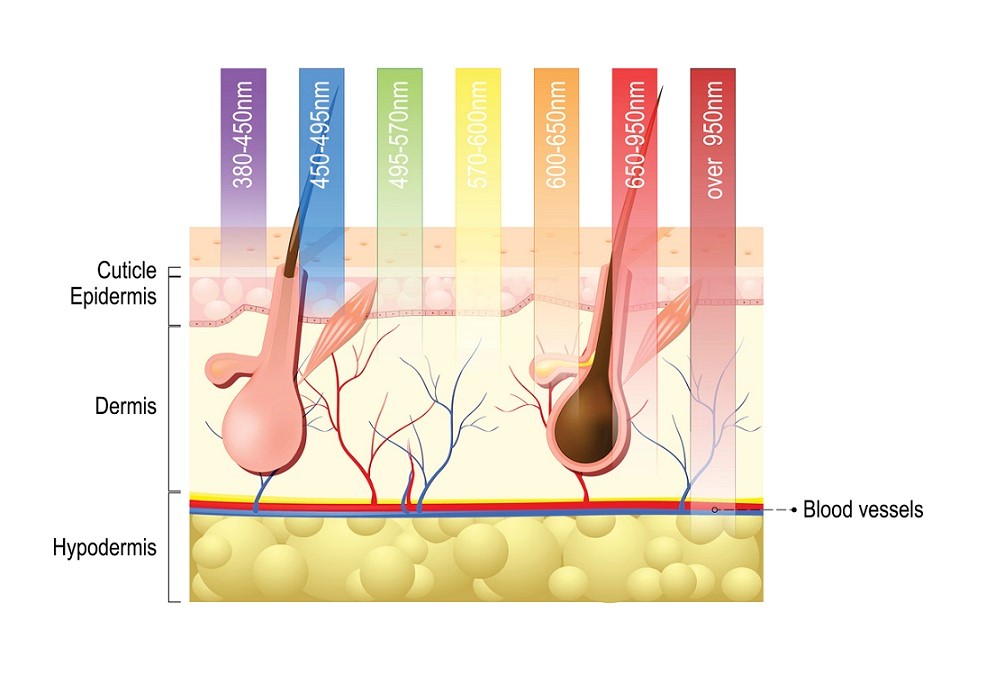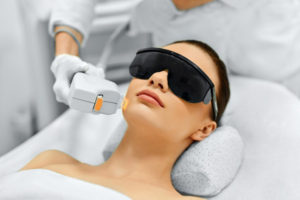Article at a glance
- Blue light therapy targets acne, psoriasis, and eczema.
- It is safe and effective for various skin conditions that may cause mild side effects.
- It requires sun avoidance and skincare preparation before treatment.
Are you considering blue light therapy? Perhaps you’ve seen advertisements for “LED light therapy” or “light therapy” and you’re curious about what it is and how it can help you. Blue light therapy is a type of phototherapy that uses blue-violet light to treat conditions like acne, psoriasis, and eczema. It can also be used to improve the appearance of scars and wrinkles.
Different types of Color Light therapy
Red light therapy uses red and near-infrared light to improve the appearance of fine lines, wrinkles, and scars. It can also be used to treat conditions like psoriasis, rosacea, and eczema.
Blue light therapy uses blue-violet light to treat conditions like acne, psoriasis, and eczema.
Yellow light therapy uses yellow light to improve the appearance of wrinkles and sun damage.
Infrared light therapy uses red light to stimulate collagen production and reduce inflammation.
How Does Blue Light Therapy Work?
Blue light treatment works by killing the bacteria that cause acne. The blue light penetrates the skin and destroys the bacteria without damaging the surrounding tissue. Blue light therapy treatment is usually done in a series of treatments, each lasting about 20 minutes.
Photodynamic therapy (PDT) is a type of blue light therapy that is sometimes used to treat cancer. PDT uses a photosensitizing agent, such as aminolevulinic acid, to make the cancer cells more sensitive to light. The light then kills the cancer cells.
Is Blue Light Therapy Safe?
Blue light therapy is considered safe when performed by a trained professional. The light used in blue light therapy is not ultraviolet (UV) light, so it does not cause the same risks as tanning or other forms of UV light exposure. However, blue light therapy can cause side effects like dryness, redness, and irritation. These side effects are usually mild and go away on their own. Human skin is not very absorbent of blue light, so the risk of damage to the skin is low.
Who Can Benefit From Blue Light Therapy?
Blue light therapy can be used for the treatment of acne in all skin types. It is an especially effective treatment for inflammatory acne, which is characterized by redness, swelling, and pain. Blue light therapy can also be used to treat psoriasis, eczema, and other skin conditions.
How effective is blue light therapy?
Blue light therapy has the most beneficial effect when used in combination with other acne treatments, such as medication or topical creams. In one study, blue light therapy was found to be more effective than placebo in reducing the number of inflammatory acne lesions. In another study, blue light therapy was found to be as effective as benzoyl peroxide in reducing the number of non-inflammatory acne lesions.
Adding in red and infrared light enhances your results, reducing inflammation and speeding up the healing
Have you ever heard about blue light therapy’s side effects?
Blue light therapy is considered safe when performed by a Professional Cosmetologist. The most common side effects of blue light therapy are dryness, redness, and irritation. These side effects are usually mild and go away on their own. Blue light therapy can also cause some inflammation, so it is important to wear sunscreen before and after treatment.
How much does blue light therapy cost?
The cost of blue light therapy varies depending on the number of treatments, the type of light used, and the provider. Blue light therapy is usually done in a series of treatments, each lasting about 20 minutes. A typical course of treatment consists of 2 weekly sessions over 5-6 weeks, although some people may need more or fewer treatments.
Is blue light therapy covered by insurance?
Blue light therapy is considered cosmetic and is not usually covered by insurance. However, some insurers may cover the cost of blue light therapy if it is used to treat a medical condition, such as psoriasis or eczema.
Blue Light Therapy: How to Prepare
Before you begin treatment, your skin will be cleansed. You should have avoided sun exposure before treatment and regularly used a broad-spectrum sunblock.
You should also avoid using any products that contain retinoids or other medications that make your skin sensitive to light. These products can increase your risk of side effects from blue light therapy.
If you are pregnant or breastfeeding, you should talk to your aesthetic nurse before beginning blue light therapy. Blue light therapy may not be recommended if you are pregnant or breastfeeding.
It is important to follow your provider’s instructions for treatment. You should also avoid sun exposure before and after treatment.
You should have a full consultation prior to treatment to discuss any concerns and questions.








